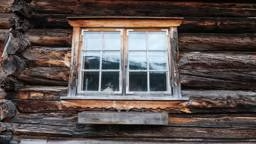WINDOWS
When choosing windows, the first thing you’ll be faced with is window classification. Wood, fiberglass and metal windows have sashes and frames made of those materials, while clad windows consist of either wood or metal frames with exterior surfaces covered by vinyl, fiberglass or aluminum. Window sashes may contain single, double or triple thicknesses of glass with airspace between thicknesses. Low-E windows include a heat-blocking film between glass panes. Instead of air, the space between glass thicknesses in a sash may be gas-filled, usually with argon or krypton to improve energy efficiency.The window type you choose can also affect the energy efficiency of your home. Among operable units, casement windows generally offer a tighter seal than double-hung units. Low-E coatings reflect solar radiation and help keep interiors cool. However, if you want the benefits of passive solar energy to help heat your home, you may want to avoid Low-E coatings, at least on south-facing windows. Wood windows clad with aluminum or vinyl offer less maintenance than wood windows and better energy efficiency than metal-framed units. Gas-filled units offer better insulating ability than air-filled; however, units destined for high-altitude home sites must be designated for such locations.
Sealing & Positioning
No matter what type of system your home uses, the method of sealing the window in its opening is critical to its energy efficiency. Windows should be carefully caulked, and voids between the window and frame filled with low-expanding foam. You may also want to use a sealing tape over the nail flanges used to attach the window to its frame. Try to seal the unit at the outside wall so air or water can’t get into the wall or framing. Caulk the edges of exterior trim where they meet the window and wall, but don’t rely on trim alone to seal the window. When your home is finished, use a candle or smoke pencil to check for leaks. Poor placement or windows that are the wrong size can also increase your monthly utility bills. The sizes, insulating and solar-screening properties, and placement of windows for optimal energy efficiency vary greatly with location. Use a designer trained in energy-efficient or sustainable design to get the greatest benefit. You can also find information and selection assistance at the web sites for Energy Star (energystar.gov), Efficient Window Collaborative (efficientwindows.org) and the National Fenestration Rating Council (nfrc.org).DOORS
The easiest way to find an energy-efficient door is to look for the Energy Star label. Energy Star categorizes door systems by the following amounts of glass present: opaque (or solid), more than 29.8 percent of the door system includes glass, and less than 29.8 percent of the system includes glass. The label will note the U-factor, or amount of heat transfer, and solar heat gain coefficient, a measure of heat transmission, of the system. Another important factor is reviewing the National Fenestration Rating Council (NFCR) label, an energy performance label that helps determine how well a product will help keep a home cool in the summer and warm in the winter. The label includes the manufacturer, product information and ratings for energy performance characteristics. The sustainability of an exterior door is more than just a simple rating system, however.Application plays a part as well, as certain placements will dictate the type of material needed. For example, local building codes may require a fire-rated door be installed where attached garages lead to the home’s interior. Areas that experience a lot of weather, such as west- or south-facing facades, may also necessitate a hardier door, regardless of its energy efficiency. Equally important to the materials used in your exterior door is how it’s installed. Many companies have their own technologies to ensure a tight system, so following the manufacturer’s instructions is essential. A good rule of thumb, though, is that a properly installed door should sit square and plumb. Gaps in the top or bottom provide a great way for water and air to get in, he adds. Also, pay attention to your sill material since some offer better thermal properties than others. For example, the most common sill material is aluminum, which conducts cold and in colder regions can potentially be a source of ice buildup, making it more difficult to open and close doors. Be sure to ask your sales representative what material will be used and what it means for your door’s operation.

Reading Window Labels
The National Fenestration Rating Council (NFRC) is an independent organization that classifies and rates windows. You can quickly evaluate windows and compare units by studying the NFRC label on the glass.
The label consists of a description and standardized ratings for the characteristics that most affect the window’s performance.
• General Description provides an overall description of the window, including the cladding, glazing, sash style and exterior covering. It also identifies whether the window has low-E coatings and gas fill. • U-factor or U-value measures heat transmittance. Most U-values fall within a range of 0.20 to 1.20. Lower values mean less heat is transmitted. To qualify for current energy rebates, a window must have a U-factor lower than 0.30. • Solar Heat Gain Coefficient (SHGC) measures the window’s ability to block the heat energy from the sun. SHGC fall between 0 and 1, with lower values indicating better ability to block solar energy. • Air Leakage (AL) is an optional measurement of the window’s tendency to leak air. It is given as the number of cubic feet of air per minute per square foot of window area. While the actual value may not mean a lot, AL is a great way to compare window units. • Visible Transmittance (VT) indicates the window’s ability to allow the passage of visible light. VT ranges from 0, meaning no visible light transmitted, to 1, meaning 100 percent of visible light transmitted. • Condensation Resistance (CL) is an optional rating, given as a number between 0 and 100, that indicates a tendency for a window to form condensation on inside surfaces during periods of cold weather. Like the AL rating, its best use is for comparing brands or types. • Windows designated with the Energy Star seal have met the standards of the Energy Star program for superior performance. Such units may be eligible for local, state or federal energy-efficiency tax credits or rebates. Some credits are based on the Energy Star rating alone, while others may depend upon the NFRC ratings.










_11868_2023-04-20_16-07-256x288.avif)



